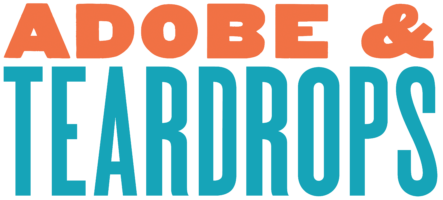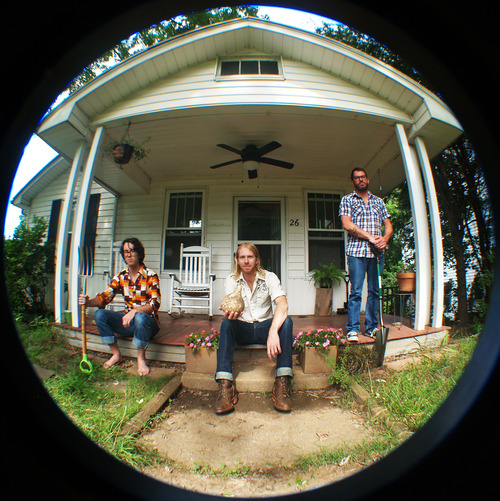I’ve already clued you in to Turchi’s hard-driving Americana. Here’s what the man himself has to say.
What’s your songwriting process like?
There are two approaches I generally take, from opposite
ends of the spectrum. Many of my songs are narrative or character based,
and so I keep a notebook of people, places, snippets of
stories—particular phrases that strike me—and piece them together.
Recently, I’ve been working my way through a fantastic book which
explores the history of the world in objects, and only what can be
learned from those objects directly, a great lesson in interpretation.
Simultaneously, I keep a batch of musical ideas on hand, guitar riffs,
melodies, rhythms, and try to fill those out or piece them together. The
final step, of course, is pairing them together, or adjusting. For
instance, I may have a certain melody in mind, but then when placed with
a certain lyrical idea, it will shift around slights, or the
instrumentation will change drastically, to better fit. Stories and
sounds, sounds and scenes.
ends of the spectrum. Many of my songs are narrative or character based,
and so I keep a notebook of people, places, snippets of
stories—particular phrases that strike me—and piece them together.
Recently, I’ve been working my way through a fantastic book which
explores the history of the world in objects, and only what can be
learned from those objects directly, a great lesson in interpretation.
Simultaneously, I keep a batch of musical ideas on hand, guitar riffs,
melodies, rhythms, and try to fill those out or piece them together. The
final step, of course, is pairing them together, or adjusting. For
instance, I may have a certain melody in mind, but then when placed with
a certain lyrical idea, it will shift around slights, or the
instrumentation will change drastically, to better fit. Stories and
sounds, sounds and scenes.
What or who do you see as your most important influences?
In
terms of music, most of my slide work is heavily influenced by Hill
Country blues—a very unique style that has its own way of sliding all
around. For songwriting, artists like Randy Newman and JJ Cale always
impress me with their clever turns and lyrical fills. It’s always vital
to depict a scene or moment specifically, and avoid
generalizations—and that holds true for both lyrical content and the
sounds of the instruments on the song. For instance, all of the sounds
on Sheryl Crow’s first album are incredible, no two songs sound the
same, and the guitar sounds (or percussion sounds) used for hooks, from
the opening track, are unique and ear catching. Production at its
finest.
terms of music, most of my slide work is heavily influenced by Hill
Country blues—a very unique style that has its own way of sliding all
around. For songwriting, artists like Randy Newman and JJ Cale always
impress me with their clever turns and lyrical fills. It’s always vital
to depict a scene or moment specifically, and avoid
generalizations—and that holds true for both lyrical content and the
sounds of the instruments on the song. For instance, all of the sounds
on Sheryl Crow’s first album are incredible, no two songs sound the
same, and the guitar sounds (or percussion sounds) used for hooks, from
the opening track, are unique and ear catching. Production at its
finest.
I noticed that you’ve worked with kids as a music
educator. How did you get involved with that? What do you see as your
greatest successes and challenges as in educator? (I’m a
teacher…couldn’t resist.)
I always play a three string cigar box guitar
and four string oil-can guitar during our sets, and I was invited to
take part as an Artist-in-Residence at Liberty Arts Magnet in Lima,
Ohio, teaching students how to play cigar box guitars that they built
themselves. That whole organization is incredible, and should be copied
everywhere—each year they bring in an artist (not just music—visual
arts, sculpting, the rotate), to work with students a week in the fall
and a week in the spring. All of the funding for the program comes from
the blues festival in Lima, Pickle’s Blues Extravaganza—all organized
and dreamed up by the one and only Pickle himself. Working with
students, the most important thing for me is always to gauge what level
of playing their comfortable with, and base my instruction on that. The
best moments are when they grasp a concept at a certain level, and then
intuitively jump to the next thing before I even expect them to (or
faster than I myself would!). Cheers to trying new things.
and four string oil-can guitar during our sets, and I was invited to
take part as an Artist-in-Residence at Liberty Arts Magnet in Lima,
Ohio, teaching students how to play cigar box guitars that they built
themselves. That whole organization is incredible, and should be copied
everywhere—each year they bring in an artist (not just music—visual
arts, sculpting, the rotate), to work with students a week in the fall
and a week in the spring. All of the funding for the program comes from
the blues festival in Lima, Pickle’s Blues Extravaganza—all organized
and dreamed up by the one and only Pickle himself. Working with
students, the most important thing for me is always to gauge what level
of playing their comfortable with, and base my instruction on that. The
best moments are when they grasp a concept at a certain level, and then
intuitively jump to the next thing before I even expect them to (or
faster than I myself would!). Cheers to trying new things.
Where did the inspiration for the “Mind’s Eye” music video come from?
Low-budget
necessity, what else! No, there’s a funny story behind that–I was
hoping to do some kind of barroom brawl scene, but that was looking a
little unreasonable to pull off, I thought using some kind of stock
footage would be one option. My girlfriend (much to her credit, she’s
usually a step ahead of me) suggested a samurai version (which would
have been cool), but, it turns out there’s somewhat of a shortage in
public domain samurai movies. So, a western seemed like a logical branch
off of that idea and then…a western featuring midgets? Suits the song
perfectly. I watched “Tiny Town” a few times in its entirety and took
notes on what scenes might fit where in the song, but boy, I never
imagined it would work out so perfectly, once edited.
necessity, what else! No, there’s a funny story behind that–I was
hoping to do some kind of barroom brawl scene, but that was looking a
little unreasonable to pull off, I thought using some kind of stock
footage would be one option. My girlfriend (much to her credit, she’s
usually a step ahead of me) suggested a samurai version (which would
have been cool), but, it turns out there’s somewhat of a shortage in
public domain samurai movies. So, a western seemed like a logical branch
off of that idea and then…a western featuring midgets? Suits the song
perfectly. I watched “Tiny Town” a few times in its entirety and took
notes on what scenes might fit where in the song, but boy, I never
imagined it would work out so perfectly, once edited.

